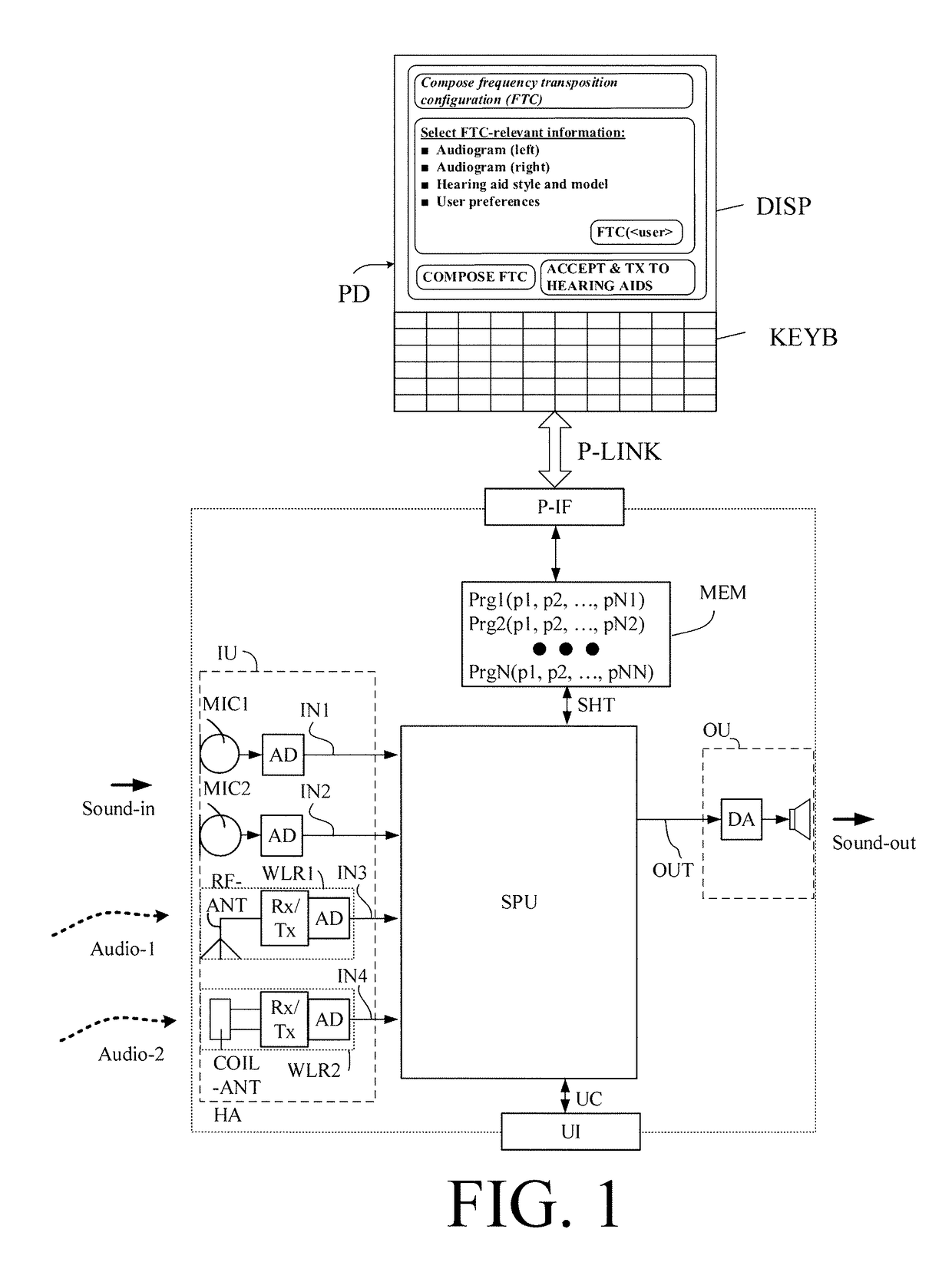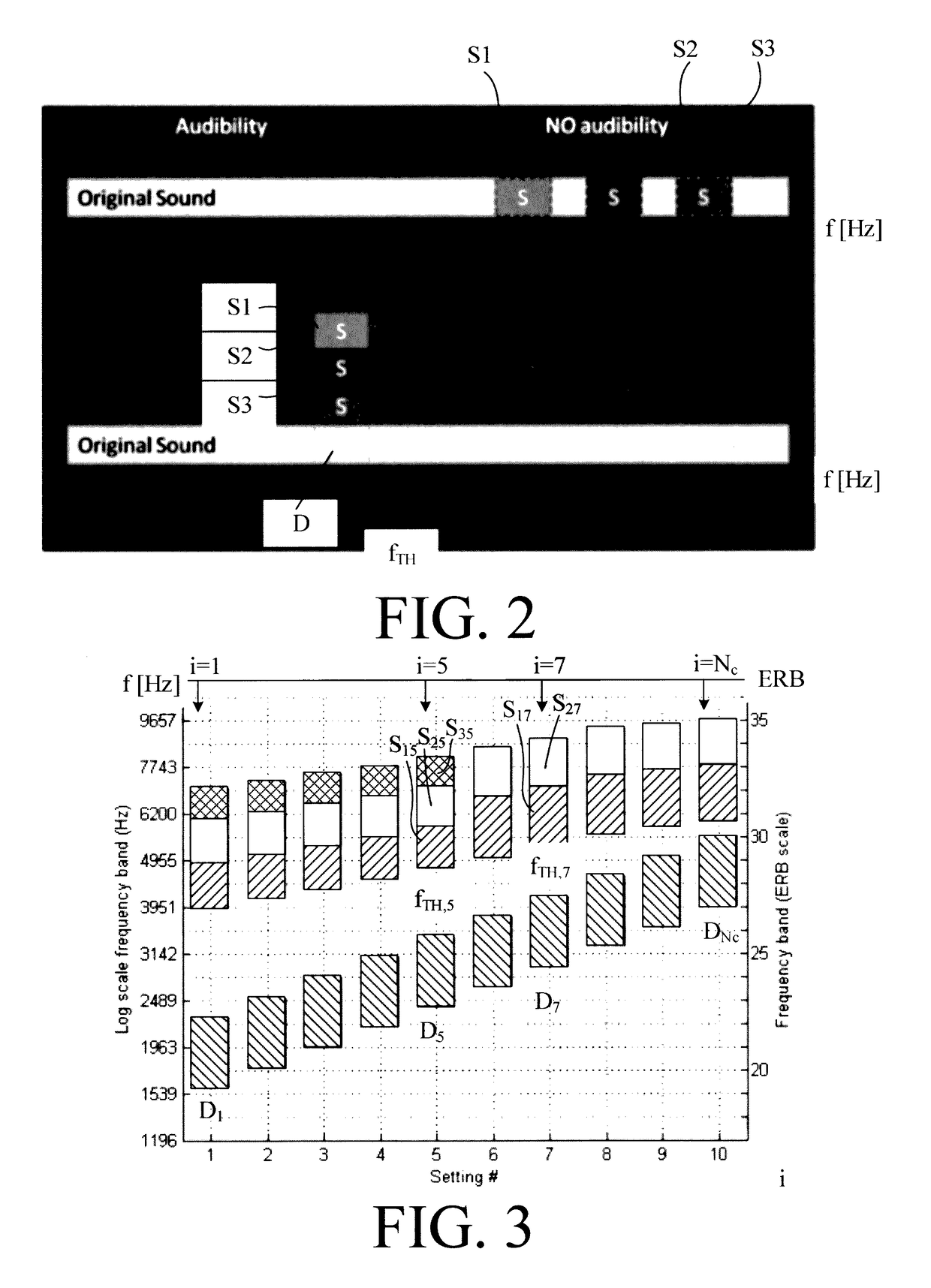Hearing aid system and a method of programming a hearing aid device
a hearing aid and programming technology, applied in the field of hearing aid systems, can solve the problems of not always being able to achieve high frequency amplification, and may not contribute to better audibility and speech intelligibility, and achieve the effect of maximizing speech intelligibility and improving audibility of high frequency sound
- Summary
- Abstract
- Description
- Claims
- Application Information
AI Technical Summary
Benefits of technology
Problems solved by technology
Method used
Image
Examples
example
[0115]The general fitting concept (prescription algorithm) regarding the frequency lowering feature of the present disclosure is to identify the frequency above which speech—after having been subject to the gain of the hearing aid device—cannot be perceived by the user. This frequency, termed the Maximum Audible Output Frequency (MAOF) decides the upper limit of the destination region (fmax(D)). On a linear scale, (each of) the source bands and the destination band may be of equal width. The 10 fixed frequency transposition configurations each have one specific destination band (different for each configuration) and two or three specific source bands (see e.g. FIG. 3). The configurations are e.g. arranged (designed) so that on a logarithmic scale one or more of the following criteria are fulfilled:[0116]the difference between destination and source bands decrease for increasing (e.g. center) frequency of the destination band (e.g. fcenter(D)=(fmin(D)+fmax(D)) / 2);[0117]the width Δf(S...
PUM
 Login to View More
Login to View More Abstract
Description
Claims
Application Information
 Login to View More
Login to View More - R&D
- Intellectual Property
- Life Sciences
- Materials
- Tech Scout
- Unparalleled Data Quality
- Higher Quality Content
- 60% Fewer Hallucinations
Browse by: Latest US Patents, China's latest patents, Technical Efficacy Thesaurus, Application Domain, Technology Topic, Popular Technical Reports.
© 2025 PatSnap. All rights reserved.Legal|Privacy policy|Modern Slavery Act Transparency Statement|Sitemap|About US| Contact US: help@patsnap.com



